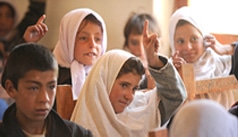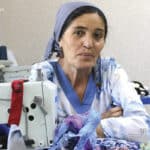Powerful Messages Displayed in Murals by Graffiti Artists
“Art speaks where words are unable to explain”
Images can have meaning far beyond words. They become part of a universal language understood by all. Easy brush strokes, sharp sketches, and even graffiti evoke feelings that resonate with people from all walks of life. When barriers arise from language, distance, and culture, art can create a bridge to universal understanding and peace.
Omaid Sharifi, co-founder of ArtLords, understands the powerful messages art can convey. ArtLords is a social and human rights movement that uses art, graffiti in particular, to bring about change in Afghanistan. The group began two years ago by painting murals on the blast walls in Kabul that surround government institutions and private businesses to protect them from bombs.
Graffiti Art Murals Send A Message
ArtLords murals focus on important causes, such as corruption. One of their most famous murals, “I See You,” is a pair of giant eyes that watch people as they walk past. The eyes convey the idea that corruption is not hidden from god or the eyes of the people.
Because the murals are visual, even people who are illiterate can understand the meaning. The murals are popular with Afghans, and Omaid says they have been more successful at spreading social messages than the expensive, text-based billboard campaigns designed by the U.S. and Afghan governments. When the majority of the population is illiterate, images can be more powerful than words.
CAI reached out to Omaid for a story in the latest [Journey of Hope] magazine. We talked with him about the social impact art can have on a community and how these messages change communities for the better. When he learned about CAI’s quest to provide education to girls and women, he wanted to do something to help.
Omaid offered to work with a school in Kabul and teach the girls to paint. Together they would paint a mural to show girls need education because they are the future of Afghanistan. We loved the idea, and we decided the message could be even stronger if we found a school in the U.S. who wanted to paint a mural to send their own message back to the girls in Afghanistan.
Teaching Cultural Acceptance Through Graffiti Art Murals
Erica Gonzalez is a teacher at the Girls Athletic Leadership School in Denver, CO, and she jumped at the chance to participate in the mural project with CAI.
“Art should be about real things in the world,” says Erica. “I thought it would be so great for my students to learn about something real, something that matters.”
Once they found a local artist to help create the mural, Erica and her students researched culture in Afghanistan to learn what life was like for their mural-painting counterparts across the world.
They read blog posts and watched videos on the CAI website, and Erica found documentaries about women fighting for the right to go to school instead of being married. The girls did their own research on women in Afghanistan and Pakistan and created posters to share the information with classmates. Before they started painting, they sat down with CAI’s communications director, Hannah White, to ask questions about the schools and students, and the challenges they face every day.
“Talking with Hannah was the coolest thing we did,” said Erica. “A lot of them latched on after that. They thought ‘oh wow, we get to go to this girls’ school and not everyone has that.’ They were aware that some women don’t have that basic right of education and that really clicked for them. They wanted to do more.”
Murals Give Girls a Voice
Meanwhile, in Kabul, the girls were preparing to paint their mural with Omaid. Art classes are not common in Afghanistan so the first step was to find a classroom and teach them the basic principals of painting. For most of the girls it was their first time holding a paintbrush.
In some of the strictest areas of Central Asia art is not allowed, and students who doodle are punished. Even in areas that support art, supplies for painting and drawing are extremely difficult to find or afford. When schools are struggling to pay for books, it’s unlikely they can spare funds for art supplies.
Omaid sketched out the mural ahead of time, an image of a studying girl with the words “I am Afghanistan’s Future” written in Dari. It’s a tribute to the girls and a reminder that they have the power to change the future.
“By painting this picture we encourage women to attend the literacy programs,” said Nilab, a ninth-grader at Central Asia Private High School and one of the mural painters. “Then they can experience positive and sustainable changes in their lives and become productive and empowered citizens in the society.”
The girls were excited about the message they were sending, but they were also excited about painting. “I feel exciting coming here (to the painting room). I can do it well,” said Farzana, one of the students involved with the mural.
After they finished the mural, the girls asked for the spare room to be turned into an art room permanently, where they can come to draw, paint, and express themselves. “I would like to depict anything I feel and have in my heart,” said Bahara, one of the mural painters,. “So in this way I could deliver my prospect as an Afghan girl within the society.”
Omaid offered to come back to teach more lessons and talk with the students about the importance of art. This kind of access to art education is a rare opportunity for girls in Central Asia. However, even though the school in Kabul has a room dedicated to art, finding the supplies will be another challenge. Pencils and paper are in short supply and the girls must find time between lessons, homework, and chores to practice. Still, they now know art can be a powerful tool in progressing their rights as women, and they are excited to keep going.
Teaching Empathy and Compassion Through Art
In Denver, Erica’s class of girls was ready to paint after a quick lesson in color mixing. Their mural sent a message of mutual compassion and understanding. They painted a globe with a ribbon joining Denver and Kabul and a stream of books showing that education and learning can join cultures. The words, “Stand Together, Stand as One” in the upper left corner declare that we are all connected.
Erica was excited to see the girls painting the mural and asking questions about the lives of girls in other countries. They were shocked to learn that young girls are sometimes forced into marriages and that they had less opportunity to express themselves through things like clothing and art.
“Empathy and curiosity are the biggest things we’re trying to teach, and I think we got pretty far,” says Erica. “Art gives you the power to create something. When you learn about problems facing other cultures, you realize you can change the situation or help someone. It’s an empowering way to interact with the world.”
A Powerful Lesson in Cultural Understanding
The mural is not the first time CAI has utilized art to create a cultural connection between students. Pennies for Peace, our service-learning program that connects students and teachers with philanthropic and cultural education, uses a Culture Quilt to teach children about different traditions around the world.
The Culture Quilt lesson is part of the Pennies for Peace Common Core Standard curriculum available to teachers who sign up for the program. In this lesson students first research culture in Afghanistan, Pakistan, and Tajikistan. Next, they are asked to brainstorm the attributes that make up their own cultures. Then, students create their own culture square to illustrate their family customs and culture. They can draw pictures, make collages or use any other creative ideas. When all the students have finished, they put the squares together to form a quilt made up of different squares and different cultures.
Powerful Connections Through Creative Artwork
Making collaborative art, like the murals or culture quilts, creates a deeper connection to people of different cultures. The act of painting or drawing can form a statement stronger than words, and that message can be understood whether you’re in a classroom in Kabul or a playground in Denver. Sometimes is takes a little paint and some creativity to send a message that will change the world.
The girls in Denver not only learned about a new culture, they took those lessons to heart. They couldn’t believe the schoolgirls painting in Kabul might not be able to finish an education or that they faced so many dangers. Erica recalls the girls coming up with ideas of how to express the importance of freedom during the mural painting.
The girls who painted in Afghanistan were moved to send a message about empowerment. Together, they declared that women’s education is non-negotiable because they are the future of Afghanistan. They felt honored that a school in the United States wanted to join them in that message.
Art is one of our most powerful tools in the quest for global understanding and empathy. By empowering the next generation to express themselves through art, we are creating important pathways to peace and mutual respect.












5 responses to “Graffiti Artists and Murals Bridge Cultures Half-Way Around the World”
This is wonderful. Show girls and boys working hard to learn, show them playing, building their schools……
Wonderful idea! Changing the world begins with ideas like this.
education means power and freedom, is a privilege.
This is powerful and it definitely shows a different perspective when it comes to Graffiti. Changing the world one piece of art at a time. There’s so much you can learn from them. I’m glad more people are noticing. And may I ask, who is the author of this article? I can’t quite seem to find it.
The messages spread by artists in Afghanistan are certainly powerful! Our then-communications manager, Katie Smith, was author of this article. Thank you for reading and caring.